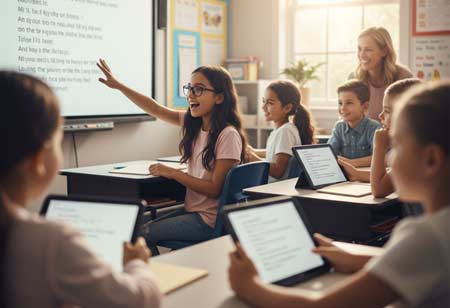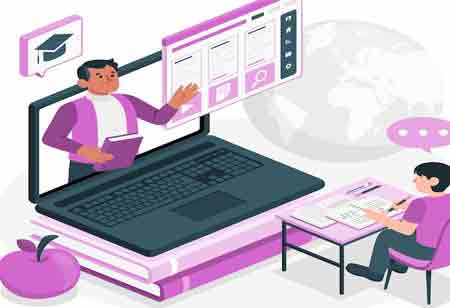THANK YOU FOR SUBSCRIBING
Be first to read the latest tech news, Industry Leader's Insights, and CIO interviews of medium and large enterprises exclusively from Education Technology Insights
Opportunities and Obstacles in Virtual Classrooms
Remote learning has significantly transformed educational practices, presenting challenges and opportunities for students, educators, and global academic systems.

By
Education Technology Insights | Thursday, September 11, 2025
Stay ahead of the industry with exclusive feature stories on the top companies, expert insights and the latest news delivered straight to your inbox. Subscribe today.
FREMONT, CA: Remote learning has significantly transformed educational processes, presenting both challenges and opportunities for students, educators, and institutions worldwide. While it offers greater flexibility, improved accessibility, and avenues for academic innovation, it also underscores the urgent need to address digital equity, support social-emotional well-being, and promote inclusive education in the post-pandemic era. By applying the lessons learned and fostering collaborative transformation, stakeholders can build resilient and equitable learning environments that prepare students for success in an increasingly digital world.
Challenges Faced by Students
Remote learning presents challenges for students, including technological disparities and social and emotional impacts. The lack of internet connectivity and digital devices limits participation in online classes and access to essential educational resources. This shift from traditional classrooms to home-based learning environments negatively impacts student engagement and academic performance. The absence of direct interpersonal interactions leads to feelings of social isolation and loneliness, affecting students' well-being and sense of belonging within the school community. Remote learning also demands self-discipline and motivation, traits often in development, especially in younger learners. It also places significant strain on parents and guardians, who may need help juggling work commitments and supporting their children's learning at home. These challenges can increase stress and anxiety among students, hindering their academic and social success.
Adaptation and Resilience Among Educators
Educators face challenges transitioning to remote teaching methods, including technology integration, maintaining student engagement and assessment, and enhancing digital literacy. They must quickly acquire new skills and expertise to effectively deliver remote instruction, monitor progress, provide timely feedback, and ensure academic integrity. Professional development initiatives are also essential to enhance their ability to provide high-quality instruction in diverse learning environments.
Benefits and Opportunities
With the flexibility, accessibility, and chance for international cooperation that remote learning offers, students can study quickly and use the methods that most effectively fit their learning preferences. Virtual platforms facilitate cultural exchanges, broadening educational experiences beyond local or national confines. Additionally, educators can tailor their teaching strategies to each student's unique needs thanks to personalized learning, made possible by customizable platforms and adaptable technologies. This approach allows for targeted instruction and offers customized feedback and dedicated support, significantly enhancing learning outcomes. By embracing the capabilities of digital education, we open doors to a more inclusive, interactive, and enriched learning environment that prepares students to thrive in an increasingly interconnected world.
Future Considerations and Moving Forward
The future of remote learning will be shaped by several factors, including equitable access to technology and internet connectivity, hybrid learning models combining online and in-person instruction, prioritizing social-emotional learning initiatives and mental health support services, and continued investment in technology and infrastructure. These factors will help promote inclusive education, bridge educational disparities, and ensure data privacy and security. By addressing these issues, academic institutions can create more flexible and effective remote learning environments.







